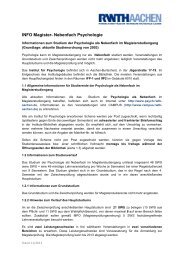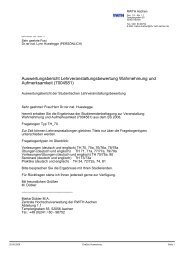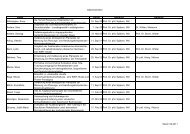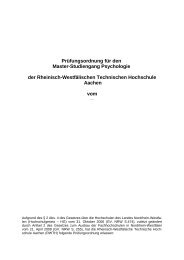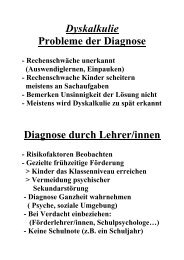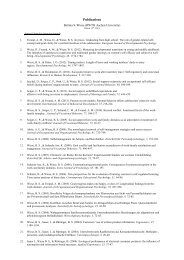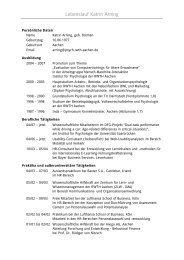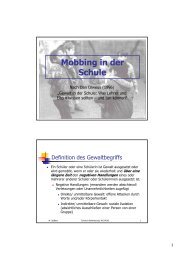1 Effects of Sensorimotor Transformations with Graphical Input ...
1 Effects of Sensorimotor Transformations with Graphical Input ...
1 Effects of Sensorimotor Transformations with Graphical Input ...
You also want an ePaper? Increase the reach of your titles
YUMPU automatically turns print PDFs into web optimized ePapers that Google loves.
etween proximal hand-movement direction and distal tool-movement direction. For<br />
example, when the effect point <strong>of</strong> the lever was in front <strong>of</strong> the pivot point and thus on the side<br />
<strong>of</strong> the hand, hand movement and effect movement corresponded. If it was beyond the pivot<br />
point, hand movement and effect movement were contrarily. The finding was that reactions<br />
were performed more efficiently when the tip <strong>of</strong> the tool was moved towards the stimulus,<br />
irrespective <strong>of</strong> the hand movement. This was clear evidence for the assumption that the<br />
intended action effect determines the response.<br />
What does this finding mean for tool use in modern workplaces? Take for example the<br />
laparoscopic surgery. Here, the surgeon inserts a tool through a tiny, artificial aperture in the<br />
patient’s torso. Although this operation technique has many advantages from a medical point<br />
<strong>of</strong> view, it creates severe problems for the surgeon as well. The aperture functions as a pivot<br />
and inverts the surgeon’s hand movement and tool movement direction, i.e. if the surgeon<br />
moves the hand to the right the tool tip inside the body moves to the left and vice versa. The<br />
results from Kunde and co-workers (Kunde et al., 2007) suggest, that what counts most in this<br />
situation is the representation <strong>of</strong> the distal action effect (i.e. tool tip moves towards stimulus),<br />
not the proximal effect (i.e. surgeon’s hand moves towards the stimulus). This finding is<br />
consistent <strong>with</strong> predictions proposed by the ideo-motor principle (Greenwald, 1970; James,<br />
1890; for recent overviews <strong>of</strong> empirical evidence see, e.g., Hommel, Müsseler, Aschersleben<br />
& Prinz, 2001; Nattkemper & Ziessler, 2004). Any intentional act requires a goal, that is,<br />
some anticipatory representation <strong>of</strong> the intended action effect. The anticipation <strong>of</strong> these action<br />
effects may fulfil a generative function in motor control: actors select, initiate, and execute a<br />
movement by activating the anticipatory codes <strong>of</strong> the movement’s effects. These may be<br />
representations <strong>of</strong> body-related effects, like tactile feedback from the moving hand operating<br />
a tool (proximal effects). However, the intended action effects when using a tool are the<br />
4



